Comparative Study of Raman Laser Generation Techniques in Cold Atomic Gravimeters
Abstract
1. Introduction
2. Theory
2.1. Principle of the OPLL Method
2.2. Principle of the EOM Method
3. Design of Experiments
3.1. Design of the OPLL Scheme
3.2. Design of the EOM Scheme
4. Comparison of Experimental Results
4.1. Comparison of Beat Frequency Linewidths
4.1.1. OPLL Beat Frequency Linewidth
4.1.2. EOM Beat Frequency Linewidth
4.2. Comparison of Phase Noise
4.2.1. OPLL Phase Noise
4.2.2. EOM Phase Noise
4.3. Long Term Stability
4.3.1. Long-Term Stability of the OPLL Scheme
4.3.2. Long-Term Stability of the EOM Scheme
5. Discussion
6. Conclusions
Author Contributions
Funding
Data Availability Statement
Conflicts of Interest
Abbreviations
| OPLL | Optical phase-locked loop |
| EOM | Electro-optical modulation |
| SAS | Saturation absorption spectroscopy |
| AOM | Acousto-optical modulation |
| PZT | Piezoelectric |
References
- Bidel, Y.; Zahzam, N.; Blanchard, C.; Bonnin, A.; Cadoret, M.; Bresson, A.; Rouxel, D.; Lequentrec-Lalancette, M.F. Absolute marine gravimetry with matter-wave interferometry. Nat. Commun. 2018, 9, 627. [Google Scholar] [CrossRef]
- Gong, W.B.; Li, A.; Liao, A.; Che, H.; Huang, C.F.; Qin, F.J. A Vibration Signal Denoising Method of Marine Atomic Gravimeter Based on Improved Variational Mode Decomposition. Wirel. Commun. Mob. Com. 2022, 2022, 1744689. [Google Scholar] [CrossRef]
- Peters, A.; Chung, K.Y.; Chu, S. High-precision gravity measurements using atom interferometry. Metrologia 2001, 38, 25. [Google Scholar] [CrossRef]
- Bidel, Y.; Zahzam, N.; Bresson, A.; Blanchard, C.; Cadoret, M.; Olesen, A.V.; Forsberg, R. Absolute airborne gravimetry with a cold atom sensor. J. Geod. 2020, 94, 20. [Google Scholar] [CrossRef]
- He, M.; Chen, X.; Fang, J.; Chen, Q.; Sun, H.; Wang, Y.; Zhong, J.; Zhou, L.; He, C.; Li, J.; et al. The space cold atom interferometer for testing the equivalence principle in the China Space Station. npj Microgravity 2023, 9, 58. [Google Scholar] [CrossRef] [PubMed]
- Rosi, G.; D’aMico, G.; Cacciapuoti, L.; Sorrentino, F.; Prevedelli, M.; Zych, M.; Brukner, Č.; Tino, G.M. Quantum test of the equivalence principle for atoms in coherent superposition of internal energy states. Nat. Commun. 2017, 8, 15529. [Google Scholar] [CrossRef]
- Xu, R.; Li, A.; Li, D.; Yan, J. Magneto-Optical Traps for Cold Atomic Gravimetry: Research Status and Development Trends. Appl. Sci. 2023, 13, 6076. [Google Scholar] [CrossRef]
- Luo, Q.; Zhang, H.; Zhang, K.; Duan, X.C.; Hu, Z.K.; Chen, L.L.; Zhou, M.K. A compact laser system for a portable atom interferometry gravimeter. Rev. Sci. Instrum. 2019, 90, 43104. [Google Scholar] [CrossRef]
- Fang, J.; Hu, J.; Chen, X.; Zhu, H.; Zhou, L.; Zhong, J.; Wang, J.; Zhan, M. Realization of a compact one-seed laser system for atom interferometer-based gravimeters. Opt. Express 2018, 26, 1586–1596. [Google Scholar] [CrossRef]
- Wu, B.; Zhao, Y.; Cheng, B.; Zhang, C.; Li, D.; Zhu, D.; Yue, Y.; Li, J.; Zhang, K.; Lin, Q.; et al. A Simplified Laser System for Atom Interferometry Based on a Free-Space EOM. Photonics 2022, 9, 301. [Google Scholar] [CrossRef]
- Wang, G.; Wang, Y.; Ying, K.; Zhang, H.; Zhang, X.; Li, Q.; Li, X.; Wang, E.; Yu, X.; Jia, A.; et al. Robust single-sideband-modulated Raman light generation for atom interferometry by FBG-based optical rectangular filtration. Opt. Express 2022, 30, 28658–28667. [Google Scholar] [CrossRef] [PubMed]
- Pandit, H.; Tyagi, A.; Vaid, H.; Dhawan, R.; Choudhary, A. Single sideband modulation formats for quantum atom interferometry with Rb atoms. Appl. Phys. B 2023, 129, 24. [Google Scholar] [CrossRef]
- López-Vázquez, A.; Maldonado, M.A.; Gomez, E.; Corzo, N.V.; de Carlos-López, E.; Franco Villafañe, J.A.; Jiménez-García, K.; Jiménez-Mier, J.; López-González, J.L.; López-Monjaraz, C.J.; et al. Compact laser modulation system for a transportable atomic gravimeter. Opt. Express 2023, 31, 3504–3519. [Google Scholar] [CrossRef] [PubMed]
- Cundiff, S.T.; Ye, J.; Hall, J.L. Optical frequency synthesis based on mode-locked lasers. Rev. Sci. Instrum. 2001, 72, 3749–3771. [Google Scholar] [CrossRef]
- Charrière, R.; Cadoret, M.; Zahzam, N.; Bidel, Y.; Bresson, A.; Carraz, O. Phase shift in an atom interferometer induced by the additional laser lines of a Raman laser generated by modulation. Phys. Rev. A 2012, 86, 33605. [Google Scholar] [CrossRef]
- Jiang, B. Low noise phase-locked laser system for atom interferometry. Appl. Phys. B 2022, 128, 033605. [Google Scholar] [CrossRef]
- Zhu, H.; Huang, P.; Gao, B.; Tang, B.; Chen, X.; Zhong, J.; Wang, J.; Zhan, M. Miniaturized optical system for high-precision mobile atomic gravimeters. Opt. Express 2024, 32, 26157–26166. [Google Scholar] [CrossRef]
- Mao, D.; Shui, H.; Yin, G.; Peng, P.; Wang, C.; Zhou, X. Gigahertz frequency hopping in an optical phase-locked loop for Raman lasers. Chin. Phys. B 2024, 33, 24209. [Google Scholar] [CrossRef]
- Bai, J.H.; Hu, D.; Gong, H.; Wang, Y. Optical phase-locked loop system for atomic interferometer. Meas. Technol. 2020, 40, 26–30. [Google Scholar]
- Steck, D.A. Rubidium 87 D Line Data [EB/OL]. Available online: https://steck.us/alkalidata/rubidium87numbers.1.6.pdf (accessed on 1 March 2024).
- Xu, R.; Qin, F.; Ding, Z.; Chen, H.; Li, A.; Li, D.; Sun, J.; Zhang, H.; Ge, C. An optimized optical phase-locked loop with high bandwidth and stability for Raman laser generation. Phys. Scr. 2025, 100, 65014. [Google Scholar] [CrossRef]
- Gillot, P.; Merlet, S.; Pereira Dos Santos, F.; Cheng, B. Influence of chirping the Raman lasers in an atom gravimeter: Phase shifts due to the Raman light shift and to the finite speed of light. Phys. Rev. A 2015, 92, 63617. [Google Scholar] [CrossRef]
- Hauden, J.; Cheiney, P.; Napolitano, F.; Porte, H.; Bouyer, P.; Barrett, B.; Battelier, B.; Templier, S. Carrier-Suppressed Multiple-Single-Sideband Laser Source for Atom Cooling and Interferometry. Phys. Rev. Appl. 2021, 16, 44018. [Google Scholar] [CrossRef]
- Marino, A.M.; Stroud, C.R. Phase-locked laser system for use in atomic coherence experiments. Rev. Sci. Instrum. 2008, 79, 13104. [Google Scholar] [CrossRef] [PubMed]

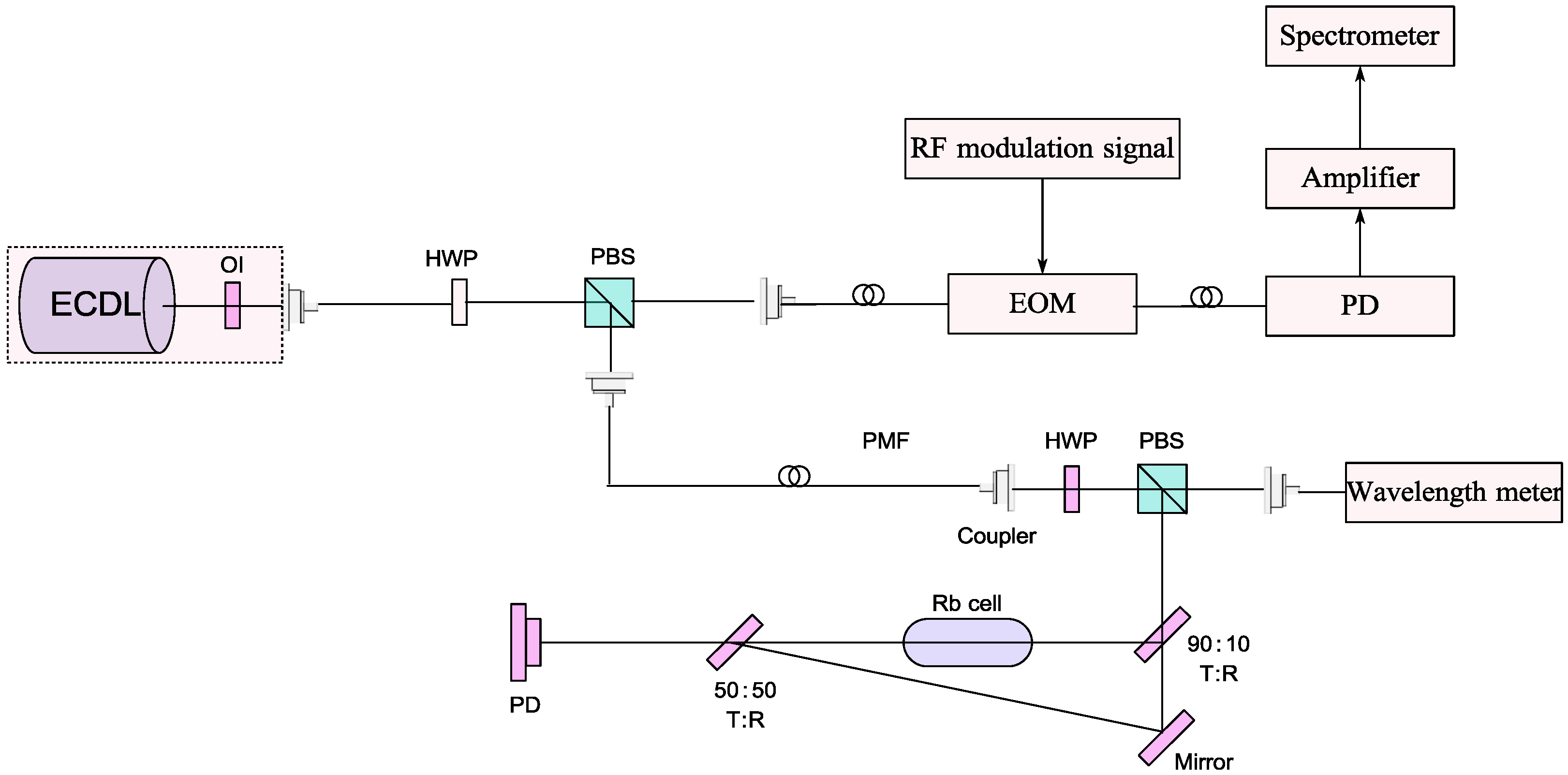

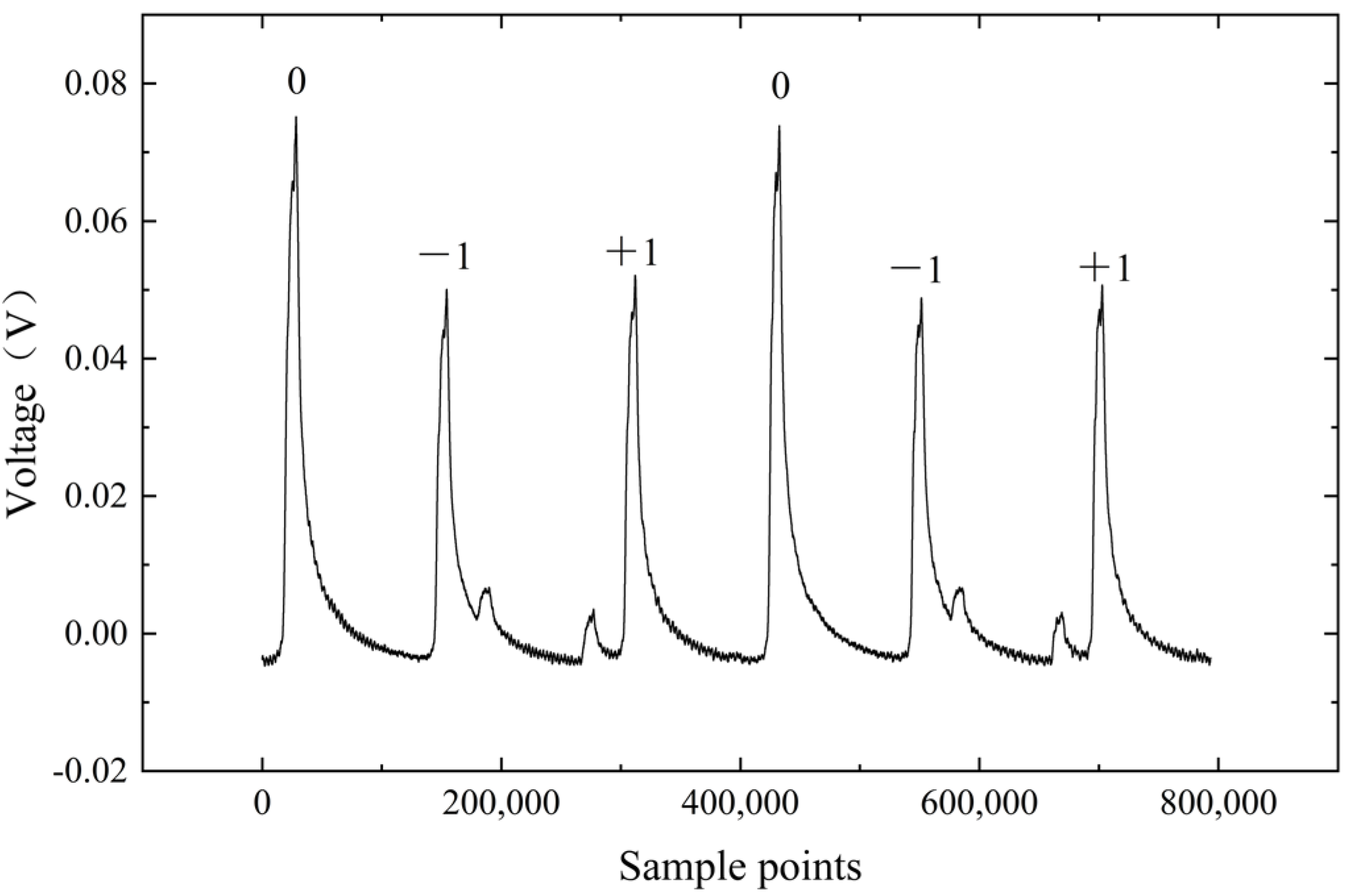
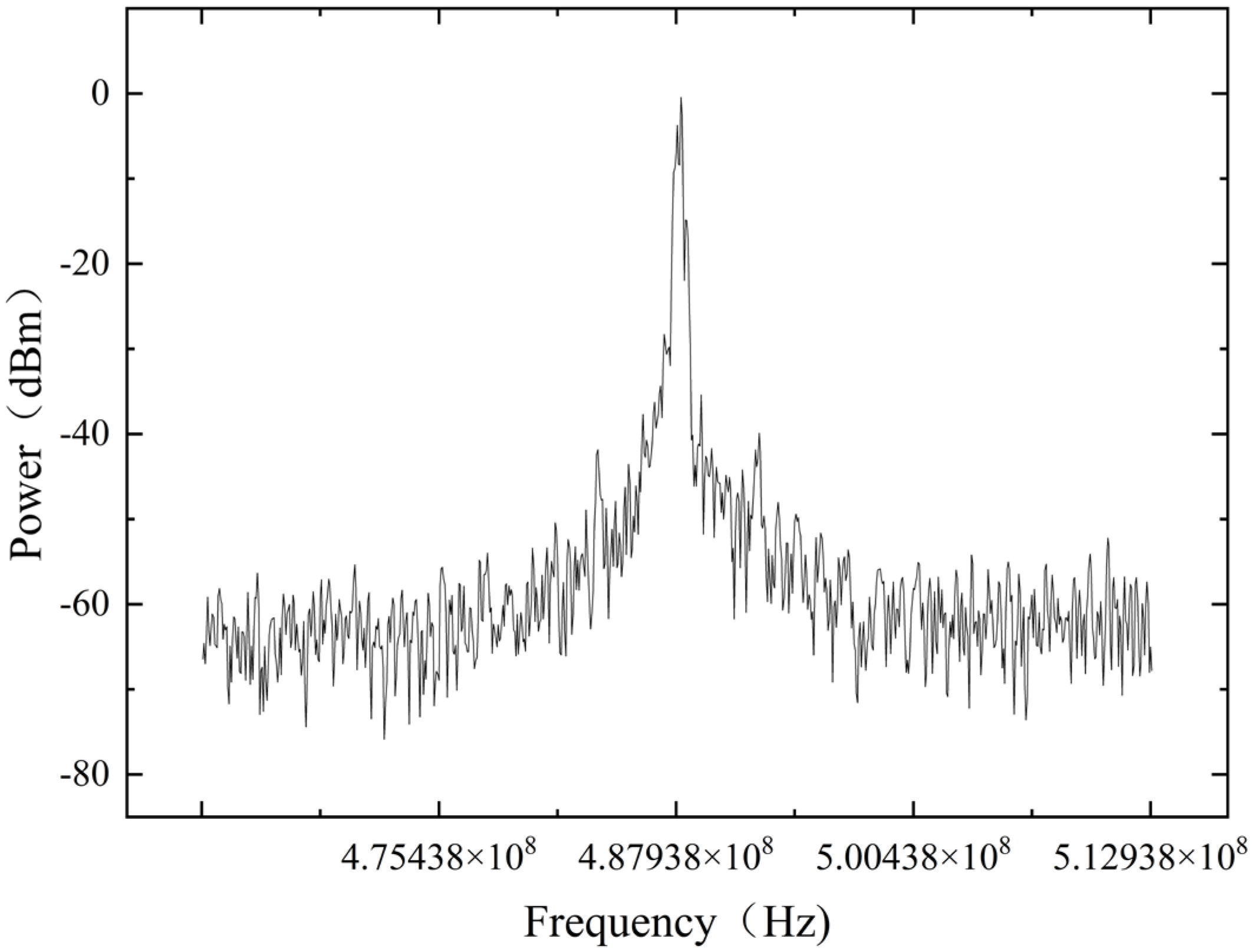

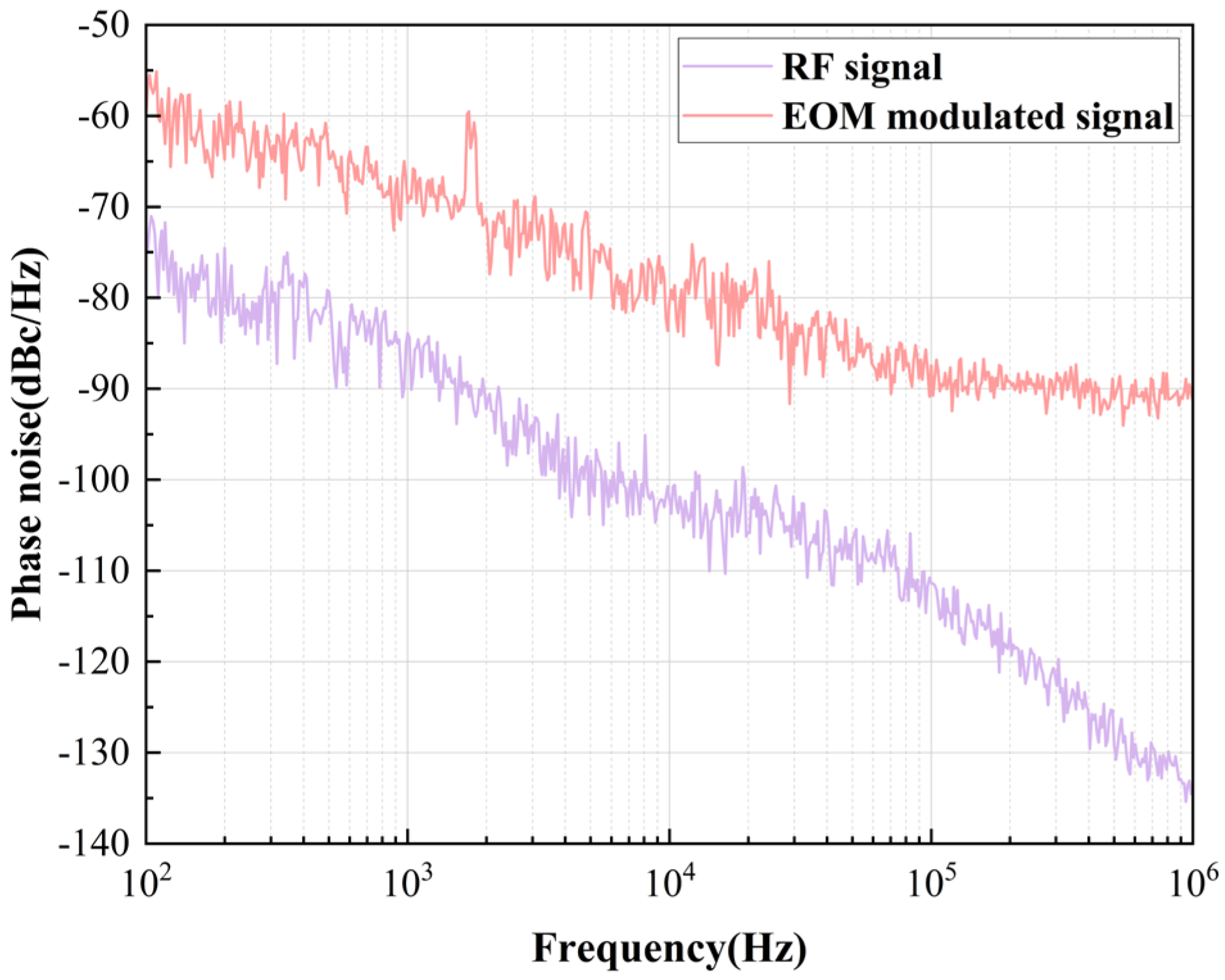


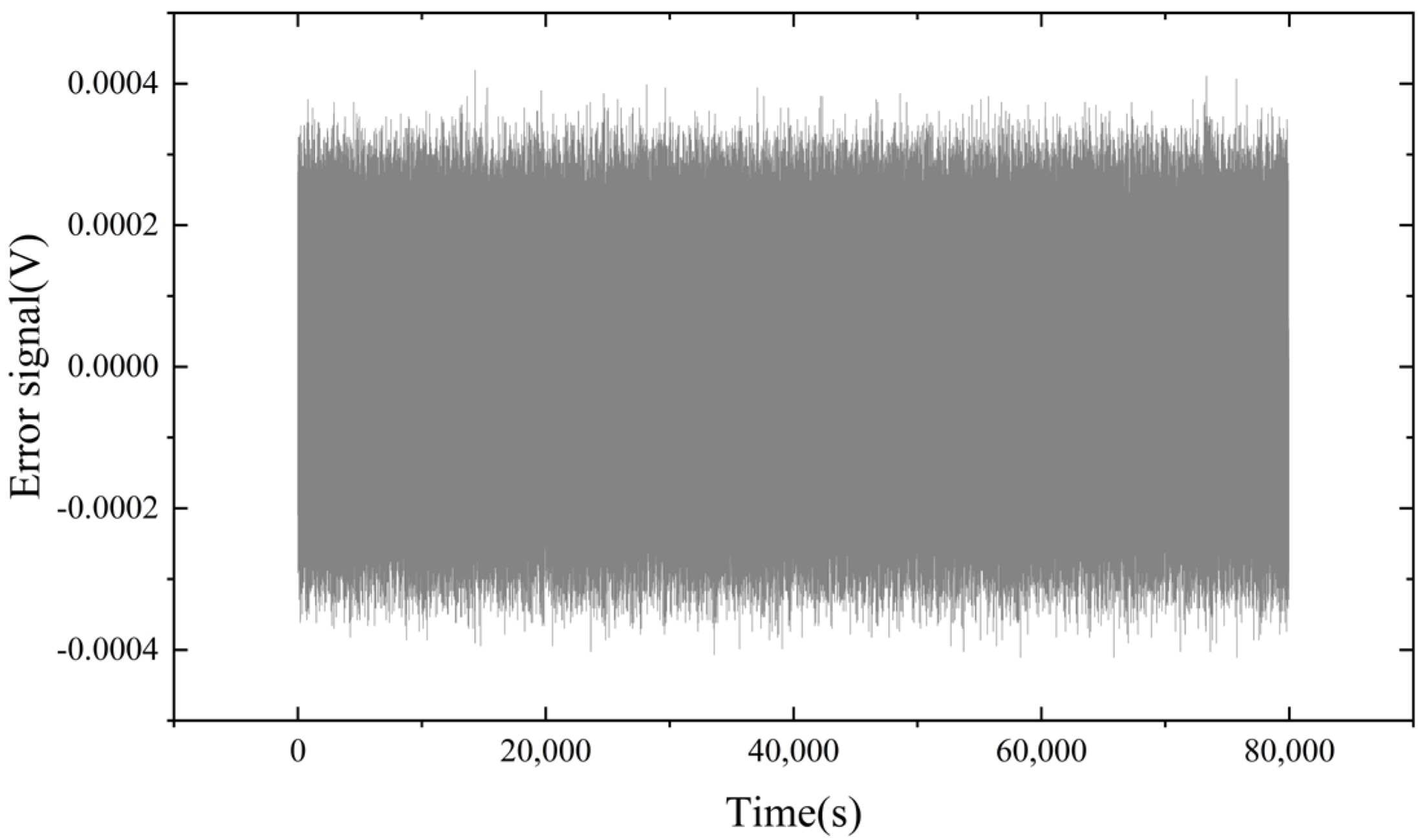

| Parameters | OPLL Method | EOM Method | Better Choice |
|---|---|---|---|
| Linewidth | 91.761 kHz | 125.94 kHz | OPLL |
| Phase noise | −106 dmc/Hz | −90 dBc/Hz | OPLL |
| Long-term stability | Good | Moderate | OPLL |
| Laser control | Good | Bad | OPLL |
| System complexity | High | Low | EOM |
| Costs | High | Low | EOM |
| Flexibility | Bad | Good | EOM |
| Accuracy | High | Moderate | OPLL |
Disclaimer/Publisher’s Note: The statements, opinions and data contained in all publications are solely those of the individual author(s) and contributor(s) and not of MDPI and/or the editor(s). MDPI and/or the editor(s) disclaim responsibility for any injury to people or property resulting from any ideas, methods, instructions or products referred to in the content. |
© 2025 by the authors. Licensee MDPI, Basel, Switzerland. This article is an open access article distributed under the terms and conditions of the Creative Commons Attribution (CC BY) license (https://creativecommons.org/licenses/by/4.0/).
Share and Cite
Xu, R.; Qin, F.; Ding, Z.; Chen, H.; Li, A.; Li, D.; Sun, J.; Zhang, H.; Ge, C. Comparative Study of Raman Laser Generation Techniques in Cold Atomic Gravimeters. Photonics 2025, 12, 807. https://doi.org/10.3390/photonics12080807
Xu R, Qin F, Ding Z, Chen H, Li A, Li D, Sun J, Zhang H, Ge C. Comparative Study of Raman Laser Generation Techniques in Cold Atomic Gravimeters. Photonics. 2025; 12(8):807. https://doi.org/10.3390/photonics12080807
Chicago/Turabian StyleXu, Rui, Fangjun Qin, Zhichao Ding, Hao Chen, An Li, Dongyi Li, Jiaqing Sun, Haibo Zhang, and Chenxi Ge. 2025. "Comparative Study of Raman Laser Generation Techniques in Cold Atomic Gravimeters" Photonics 12, no. 8: 807. https://doi.org/10.3390/photonics12080807
APA StyleXu, R., Qin, F., Ding, Z., Chen, H., Li, A., Li, D., Sun, J., Zhang, H., & Ge, C. (2025). Comparative Study of Raman Laser Generation Techniques in Cold Atomic Gravimeters. Photonics, 12(8), 807. https://doi.org/10.3390/photonics12080807




